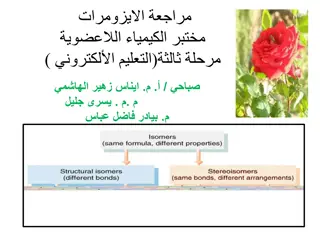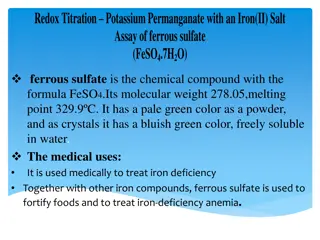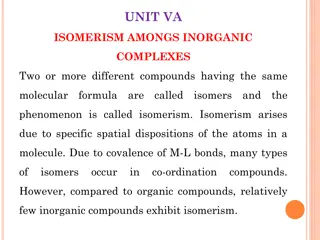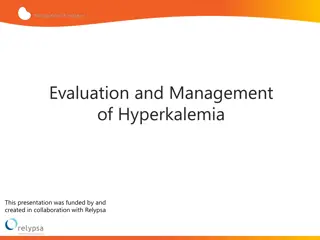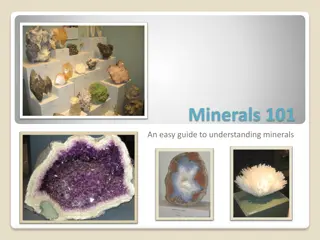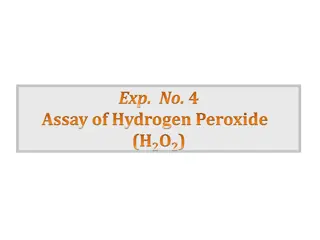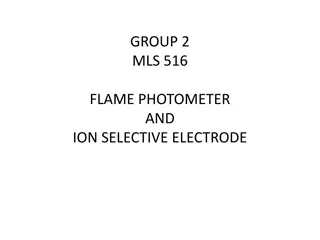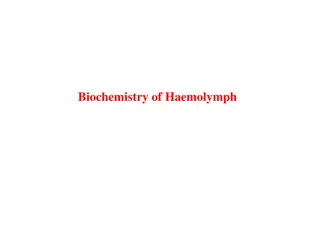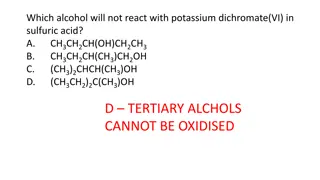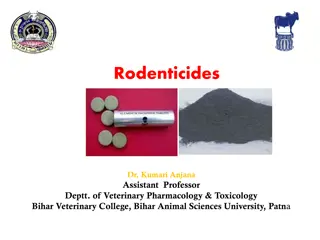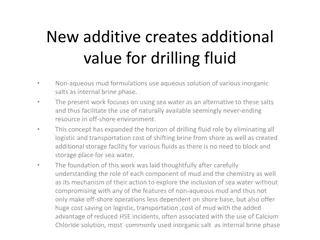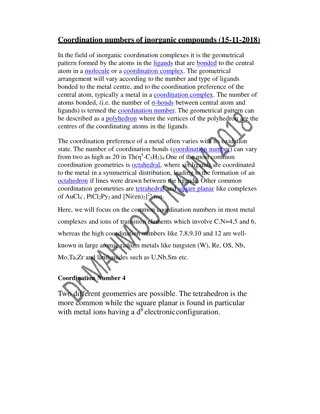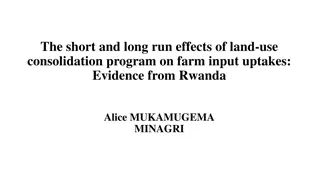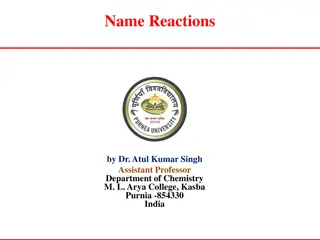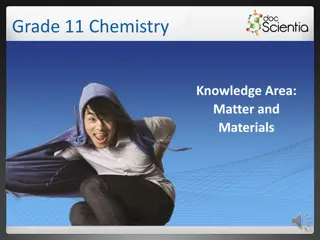Inorganic Chemistry Practical II: Preparation and Properties of Potassium Alum
This practical guide covers the preparation and properties of potassium alum, a versatile chemical compound used in various industries. Learn about its crystal structure, uses, and methods of preparation through detailed experiments and analysis.
Download Presentation

Please find below an Image/Link to download the presentation.
The content on the website is provided AS IS for your information and personal use only. It may not be sold, licensed, or shared on other websites without obtaining consent from the author. Download presentation by click this link. If you encounter any issues during the download, it is possible that the publisher has removed the file from their server.
E N D
Presentation Transcript
Inorganic Chemistry Practical II The First Course By Lecturer Sinan Midhat Al-Bayati Asst. Prof. Anaam Majeed Rasheed Asst. Lecturer Al-Ameen Bariz Omar Supervised by: Dr. Rehab AbdulMahdi Al-Hassan
Experiment No. (2) Aluminum (III) Potassium Sulfate Dodecahydrate Potassium alum, potash alum, tawas, or potassium aluminum sulfate is a chemical compound: the potassium double sulfate of aluminum. Its chemical formula is KAl(SO4)2, and it is commonly found in its dodecahydrate form as KAl(SO4)2.12(H2O). Alum is the common name of this chemical compound, given the nomenclature of potassium aluminum sulfate dodecahydrate. It is commonly used in water purification, leather tanning, dyeing,fireproof textiles, and baking powder. It also has cosmetic uses as a deodorant, as an aftershave treatment and as a styptic for minor bleeding from shaving.
Potassium alum crystallizes in regular octahedra with flattened corners, and is very soluble in water. The solution reddens litmus and is an astringent. When heated to nearly a red heat it gives a porous, friable mass, which is known as "burnt alum". It fuses at 92 C (198 F) in its own water of crystallization. "Neutral alum" is obtained by the addition of as much sodium carbonate to a solution of alum as will begin to cause the separation of alumina. http://upload.wikimedia.org/wikipedia/commons/thumb/b/be/Potassium_alum_octahedral_like_crystal.jpg/220px-Potassium_alum_octahedral_like_crystal.jpg Potassium Alum Crystal with Unequal Distribution of the Octahedral Face Area
PROPERTIES AND USES It is white crystalline solid. It is soluble in water. It is used for the purification of water. It is also used in leather industry and in paper industry. It is used in fire extinguisher. Melting point is 92oC Types of Alum Potassium aluminum sulfate KAl(SO4)2 12H2O Sodium aluminum sulfate NaAl(SO4)2 12H2O, Ammonium aluminum sulfate NH4Al(SO4)2 12H2O Chromium potassium sulfate KCr(SO4)2 12H2O Ammonium Ferric Sulfate NH4Fe(SO4)2.12H2O
The Reagents Required: - Potassium sulfate K2SO4 (0.25 g). - Distilled water. - Aluminum sulfate Al2(SO4)3.18H2O (0.9 g). - Filter paper. Procedure: 1) Dissolve (0.25 g) of potassium sulfate K2SO4 in (5 ml) distilled water. 2) Dissolve (0.9 g) of Aluminum sulfate hydrate Al2(SO4)3.18H2O in (10 ml) distilled water. 3) Mix the two solutions in one flask or until the next laboratory period. 4) Remove the flask overnight to get crystal formation throughout the liquid. 5) Filter the crystal and calculate the percentage yield of Alum. ???? ?? ???? ???????? (?) ???? ?? ? ????????? ????????? (?) 100 % ????? =
Questions: Give another method to prepare potassium Alum. Calculate the mass of KAl(SO4)2.12H2O (theoretical mass). Calculate the percentage yield of Alum. Draw the structure of potassium Alum. Give another structure of Alum.
Another Method to Prepare KAl(SO4)2.12H2O: In this experiment you will prepare and characterize Alum (potassium aluminum sulfate dodecahydrate, KAl(SO4)2.12 H2O. The first step in this synthesis, which you will perform during Week 1, is to react metallic aluminum with a concentrated solution of potassium hydroxide (KOH) to form the potassium salt of the tetrahydroxoaluminate complex ion, [Al(OH)4]-. The balanced chemical equation for this oxidation-reduction reaction is: 2?? ? + 2?????+ 6?2? ? 2??? ??4??+ 3?2? The second step in the procedure is to convert the KAl(OH)4 to Alum by adding sulfuric acid (H2SO4) in an acid-base reaction. Under the experimental conditions, the Alum has a limited solubility in water, so it precipitates from the solution. The balanced chemical reaction that occurs in this step is ??? ??4 ??+ 2?2??4 ??+ 8?2? ? ??? ??4 2.12?2?(?)
The overall balanced chemical reaction for the conversion of aluminum to Alum, shown below, can be obtained by adding together the balanced chemical equation og each step. 2???+ 2?????+ 22?2??+ 4?2??4 ?? 2??? ??4 2.12?2??+ 3?2 ? The second and third weeks of this exercise will be devoted to characterize the Alum. Alum is an ionic compound, hence its melting and boiling points are likely to be too high to be conveniently measured. Also, most spectroscopic methods would not yield useful information. Therefore, we will rely on chemical means to show that we did, in fact, form Alum in our reaction. This procedure duplicates how chemists characterized chemical reactions until the late 20th century, and in some cases chemical means of characterization are still the only methods available.





